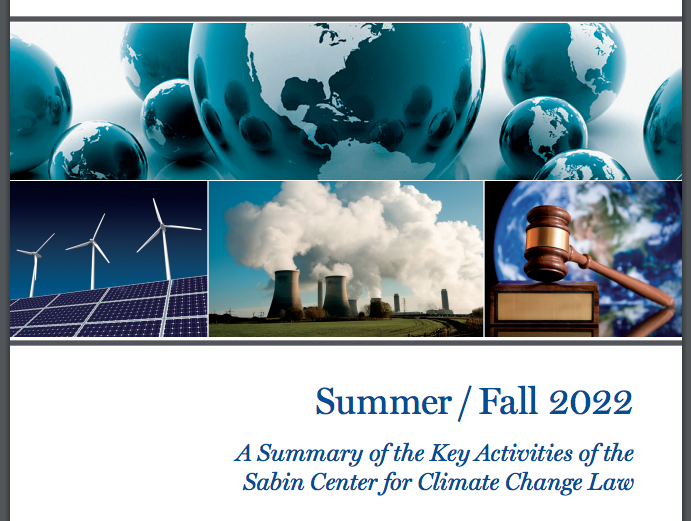Payal Nanavati
Columbia Law School Class of ‘17
Climate change has already begun to force elements of the electric grid to operate in conditions materially different from those for which they were designed. Persistent high temperatures, heavy or reduced precipitation, extreme weather events, and sea-level rise can all affect grid operations. The state and federal regulators tasked by state law with ensuring that consumers have access to “safe and reliable electricity at just and reasonable rates” should address these vulnerabilities by prioritizing the grid’s adaptation—a task that requires anticipating environmental changes and identifying technologies capable of making the grid less vulnerable and more resilient amid those changes.
This new chapter is written for advocates seeking to persuade utility commissions that a more thorough integration of adaptation considerations into the design and operation of the electric grid will increasingly be indispensable to the provision of cost-effective electricity services.
It highlights factors that advocates can insist commissions consider before authorizing the construction of new electricity generating capacity or other grid infrastructure. For example, faced with proposed construction of a new inland thermoelectric power plant, an advocate could ask several important questions: Do the demand forecasts used to justify construction take energy efficiency trends and expected climatic changes into account? If the plant will rely on large volumes of water for cooling, has the utility taken into account expected changes in the availability and cost of accessing that water? Does the proposal assume that the water’s average temperature will stay the same for the duration of the plant’s useful life? If that temperature were to increase by two degrees, would it impair plant operations? Have alternatives that avoid new construction—such as efficiency measures or distributed generation—been considered? And if it would cost a significant amount to harden the plant against storm or flood damage, would it be cheaper to just buy more power from an adjacent region for another few years instead of committing to owning and operating a new power plant for 40 years or more?
After providing background about the electric grid and the expected impacts of climate change on its operations, the chapter explores substantive proposals for grid adaptation and describes commission hearing procedures that advocates would need to navigate in order to present their evidence and arguments to a utility commission.
Other chapters in the Legal Tools for Climate Adaptation Advocacy handbook include:
- Clean Water Act, by Channing Jones
- Flood Insurance, by Matt Sienkiewicz
- NEPA, by Jennifer Klein and Ethan Strell
- Securities Law, by Nina Hart




